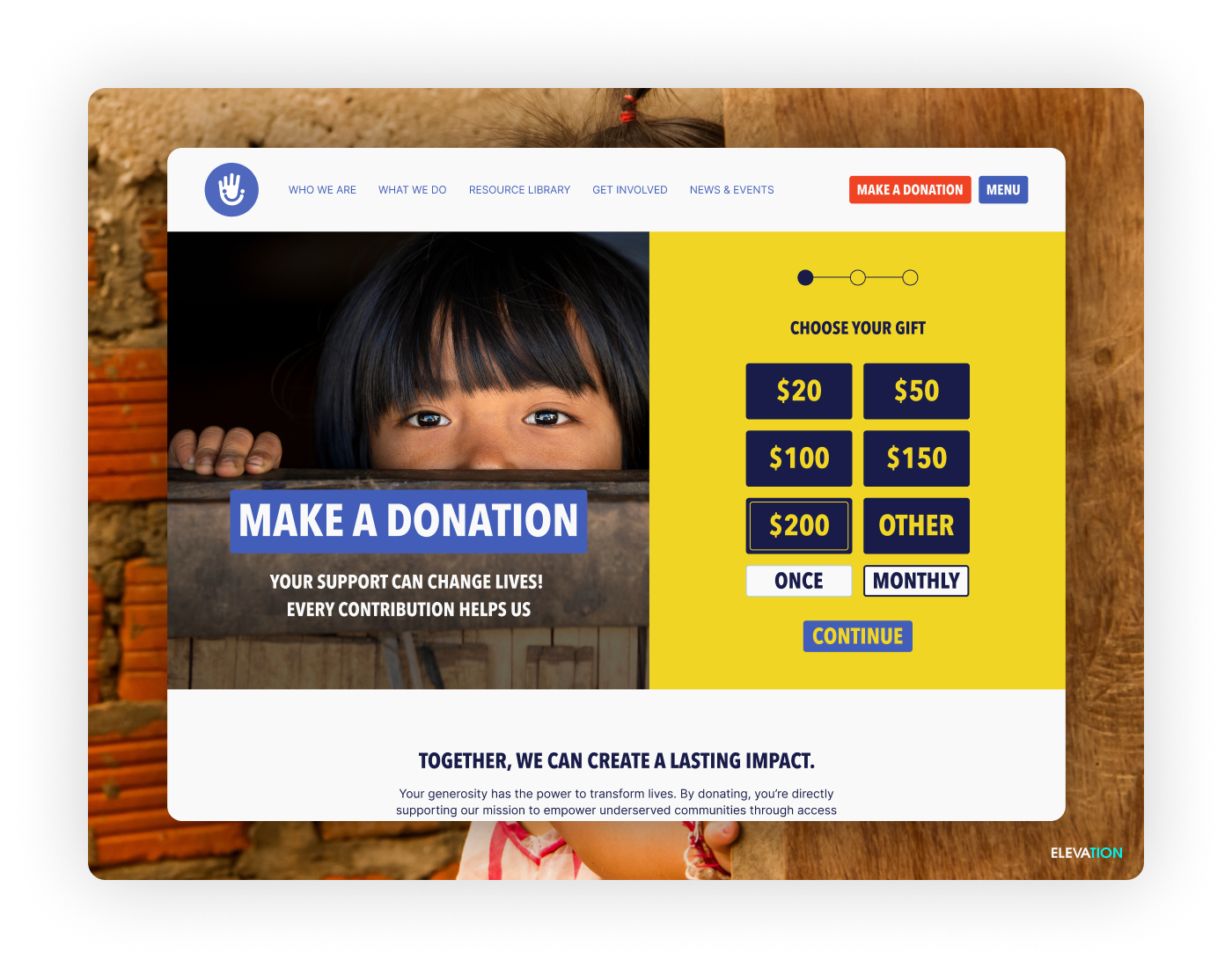It’s about time to start thinking about this year’s fundraising campaign. Whether your nonprofit conducts fundraising year-round or focuses solely on year-end giving, consider taking the time now to zoom in on how to get donations online.
Collecting donations can be an arduous process itself, but understanding the factors that motivate someone to click (or not click) the donate button is another story.
Donations are the lifeblood of your organization, and online donations are the most prominent sources of funds. With online donations increasing yearly, both in terms of the number of people donating and the amount donated, you can no longer afford to neglect this area.
We’ve taught you how to increase online donations, we’ve also shown you how to optimize your donation page.
Now we want to delve even deeper into how your nonprofit can make the absolute most out of this year’s fundraising and how you can maximize your online donations in the most effective way possible.
We’re using donor psychology to see what makes a person most likely to give to your organization.
First, let’s tackle some reasons why people don’t donate:
- They can’t afford to
- They’ve already donated and are content with their contribution
- They’ve made contributions to individuals and do not feel the need to donate to an organization
- They do not think the money will be used efficiently
- They volunteered time instead of money
- They could not find a cause worthy of donation
- They did not like the way the money was requested (in frequency, tone, etc.)
- They were not asked to give
- They did not know how to make a donation
Some of these factors may be outside of your organization’s control, but many are not. Make sure you’re not losing donors due to easily avoidable mistakes. Making online donations should be as simple and clear-cut as possible. Never lose a donation to someone who did not know how to make one.
Now, let’s try to better understand the factors that do lead to online donations:
- Individuality. Focusing your fundraising campaign on one individual person and his or her identifiable story works much better to garner donor attention than an open-ended ask from a cause or organization.
- Proximity principle. Donors are more likely to donate when you are closer to reaching your goal and they feel like their contribution will help you achieve it.
- Exclusivity. There is more urgency to donate if donors feel like they are part of an exclusive opportunity or that the opportunity will expire quickly. Offer some sort of time limit that will encourage donors to get their donations in before a deadline. Note: be sure to do this delicately – often times pushing a deadline can actually be a deterrent for donors.
- Foot-in-the-door principle. People are more likely to donate if they already have some investment in your cause. If you’ve built a relationship with the donor — this could be in person, over the phone, via social media, or any previous interactions — they will be much more likely to help you out. A good tactic could be asking donors to follow or share your content on social media. Once they’ve done something to help you, they are more likely to continue.
- Authority. Establish your organization as a trustworthy source. Write web content about topics that establish thought leadership, display your expertise, and get endorsed by other authorities in your niche. Having a verifiable web presence will make people much more likely to give online donations.
- Re-enforcement. Just like Pavlov’s dogs. People do things because they are rewarding. Give donors a reason to feel good about their donations and re-enforce their decisions, then they will be more likely to continue this kind of action.
Now that we know more about what makes donors tick, what are the takeaways you can employ in your online donation campaigns?
Blackbaud has some advice on the matter:
- Place your donation button/form in an easily accessible location so that people can make quick and easy donations directly from the site
- Mobile optimize your donation page
- Emphasize personal connection — people prefer to donate to causes they identify with or have some personal affiliation with
- Raise brand awareness and make sure people know about your cause
- Remain accessible. Donors want to see what their money goes to — be transparent and available to answer any follow-up questions
- Communicate via social networks. Social media is an awesome way to show and tell your donors what their money has gone to.
- Of course, it wouldn’t hurt to offer a tax deduction, too!
Let’s make this online donation campaign the most successful one yet. As always, let the team at Elevation know how we can help your organization achieve your goals.



